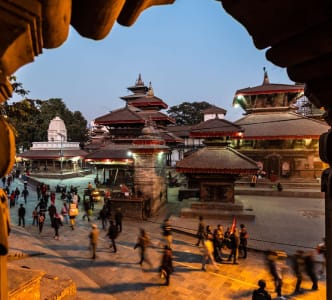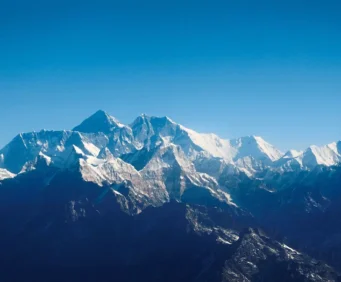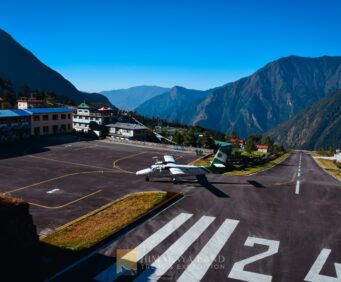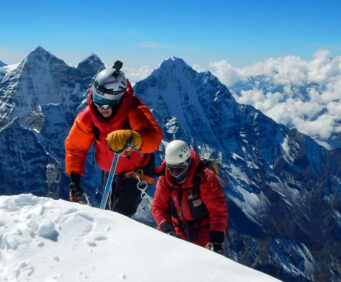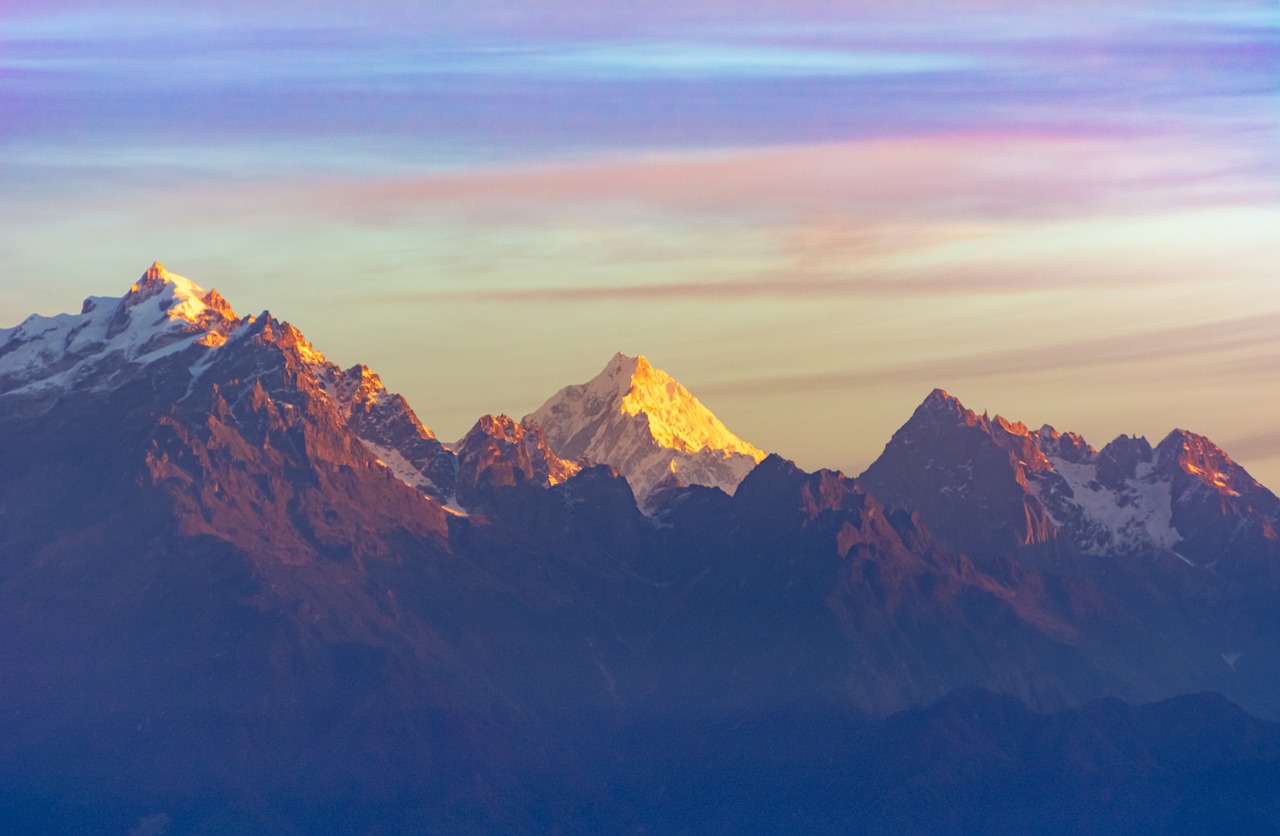
The Attractions of Kanchenjunga Trekking
17th March, 2024 - Posted By: Himalayan AbodeAn amazing and challenging adventure trekking package available in Nepal is the Kanchenjunga trekking. At an elevation of 8,586 meters, Mount Kanchenjunga is the second-highest mountain in Nepal and the third-highest mountain in the world, behind Mount Everest and Mount K2. The mountain is situated in the eastern region of the country. Today here in this article we will discuss the Attractions of Kanchenjunga Trekking.
In actuality, the Kanchenjunga region was only made accessible to hikers in 1988, and it is currently protected by the World Wildlife Fund and the Nepali government through the Kanchenjunga Conservation Area Project.
The Red Panda and other alpine flora, fauna, and birds can be found at the Kanchenjunga sanctuary. In fact, the Kanchenjunga region has been hailed by numerous hikers and climbers as the best hiking path in Nepal.
Compared to other trekking routes in Nepal, the Kanchenjunga Trek route/trails are marginally longer. The most challenging and well-liked trekking routes in Nepal are listed here.
Highlights of the Kanchenjunga Trekking
- The third-highest mountain in the world is called Mount Kanchenjunga.
- The amazing hiking on the massive glacier.
- Perfect & Unique Settlement in a Rural Village
- Extremely distinctive rural culture with its quality of living.
- Investigating the Tibetan Refugee Camp.
- The East Face of Mount Everest and Mount Makalu’s allure.
- Numerous varieties of the Kanchenjunga Region’s flora and fauna.
- Unique Farming and Agriculture
- The Yeti Myth.
- Numerous popular domestic and wild animal species.
- The breathtaking panoramic vista of gorgeous green landscapes and white snow-capped mountains.
Kanchenjunga Base Camp Trekking
Although the Kanchenjunga Base Camp Trek is advertised as lasting 25–28 days, it lasts 22 days and is an arduous, memorable hike through some of Nepal’s most breathtaking scenery. Over a distance of 220 km, the entire walk to Kanchenjunga Base Camp is an exciting and captivating experience.
Experienced trekkers seeking an epic adventure will love this trek’s secluded settlements, high-altitude terrain, and stunning views of the Kanchenjunga massif. Trekking to the third-highest peak in the world, which is situated in eastern Nepal, will take you through isolated villages, alpine forests, and high-altitude terrain. Along the way, you’ll be rewarded with breathtaking views. These breathtaking views add to the beauty of the Attractions of Kanchenjunga Trekking.
Things to learn about the Kanchenjunga Trekking
Long and strenuous, the Kanchenjunga trip takes hikers deep into the wilderness of the mountain ranges that border Tibet and Sikkim in Nepal. You will also witness a variety of landscapes when trekking the Kanchenjunga, from a lush, tropical rainforest to forests of oak, chestnut, and rhododendron, and at higher elevations, an alpine zone.
There are so many different types of trekking in Nepal, like adventurous and Easy. However, this trek is the most difficult and well-liked worldwide. Situated in eastern Nepal, Mt.Kanchenjunga is the 3rd-highest mountain in the world.
Trekking up Kanchenjunga is an arduous yet rewarding journey that passes by glaciers, forests, and traditional villages while taking you through secluded and breathtaking scenery.
The typical Kanchenjunga trek begins at Suketar and concludes at Taplejung, taking between 21 and 28 days to complete. Because the highest elevation reached is only about 5,000 meters, it demands a decent level of physical fitness and prior experience hiking at high altitudes.
When the weather is good and the skies are clear, late September to early December and late March to early June are the ideal times to trek on Kanchenjunga.
Important things that you have to know about Kanchenjunga trekking
The Kanchenjunga region has many wonderful things to offer. With the assistance of a local trekking company or a trekking guide in Nepal, trekkers must be aware of several essential facts before beginning the Kanchenjunga climb. If travelers are aware of the following items before beginning their walk in the Kanchenjunga region, then all of them will easily fulfill their dreams. The most important information regarding the Kanchenjunga base camp trip is listed here. For example,
Permits for the Kanchenjunga Trekking: To trek in the Kanchenjunga region, you must have a restricted area permit, which is available in Kathmandu from the Nepalese Department of Immigration.
Level of difficulty at the Kanchenjunga Trek: The Kanchenjunga base camp trek is a demanding and taxing adventure that calls for a high degree of physical fitness and altitude acclimation. Although trekking in the Kanchenjunga region is challenging, the Attractions of Kanchenjunga Trekking will make it worthwhile.
Altitude at the Kanchenjunga Trekking: Since the trek’s highest point is just about 5,000 meters above sea level, it’s critical to carefully check your health and give acclimatization due consideration.
Weather at the Kanchenjunga Trekking: When the weather is clear and stable, late September to early December and late March to early June are the ideal times to hike on Kanchenjunga. But mountain weather is erratic and subject to sudden changes, so you should always be ready for anything.
Equipment required for the Kanchenjunga Trekking: Warm clothes, durable shoes, and a sleeping bag are among the main pieces of appropriate and high-quality equipment needed for the walk. Additionally, it’s critical to have a first aid kit on hand and to take the appropriate safety measures to avoid altitude sickness.
Guide and Porter at the Kanchenjunga Trekking: It is a good idea to hire a guide and porter for the trek to benefit from their invaluable support and aid with logistics and navigation.
Kanchenjunga Trekking Difficulty
The hike to Kanchenjunga Base Camp has a moderate difficulty level. Usually, the trekking takes 18 to 22 days. While no prior trekking experience is necessary for the Kanchenjunga Trek, it is advised that trekkers be physically healthy and committed. Nonetheless, a lot of hikers have come forward to discuss how difficult the Kanchenjunga base camp trip in Nepal is.
There aren’t any strict walking difficulty levels. However, we are aware of the degree of difficulty associated with the Nepalese Kanchenjunga Trek. People ranging in age from 10 to 75 are walking this route with little to no difficulty. However, the higher altitude might occasionally produce altitude sickness in certain people.
Cost for Kanchenjunga Trekking
How much cash should I bring with me to Nepal for the Kanchenjunga base camp trek?
From $2190 to $2990 in US dollars
There is never a set pricing for the Kanchenjunga Base Camp Trek. The cost of the trip would vary based on the itinerary, the outfitter, and their services, from USD 2190 to USD 3990. The cost of the opulent hiking package and helicopter return will be slightly more than that of the Nepalese Kanchenjunga trek’s ordinary options.
Attractions of Kanchenjunga Trekking
Cultures at Kanchenjunga Trekking
The Kanchenjunga region offers more than just stunning vistas of the Himalayas. Trekkers can interact with ordinary local populations and experience their kind welcome while traveling to this unspoiled location. One of the most well-liked districts for cardamom production is Taplejung. You will hike into the foot of Mount Kanchenjunga, passing through a region used for growing cardamom.
Not only that, but a climb to Kanchenjunga Base Camp allows visitors to see the rich local culture that is blended with the Buddhist and Limbu cultures found in the upper and lower valleys, as well as the secluded settlement. There is no better way to get to know locals and see their culture than by staying in their homes and witnessing their everyday activities.
Tseram and Ramche Campsite
These two stunning are campgrounds if you enjoy camping. One Tseram, commonly known as Cheram, is situated 3870 meters above sea level. And on the southern flank of Mount Kanchenjunga, there’s another 4,580-meter Ramche. Both locations are charming campgrounds in breathtakingly beautiful scenery. The ideal location for acclimatization before trekking to Kanchenjunga South Base Camp is Tseram.
It is possible to acclimate for a day hike in Yamgachha Khola Valley from Tseram. Moreover, these beautiful places will add more to our Attractions of Kanchenjunga Trekking. Regarding the direction of the 5,202-meter-high Khang La Pass, which links Sikkim and Nepal.
Far from the clamor and distraction of daily life, Tseram offers serene and pleasant surroundings. It’s a place where you can completely immerse yourself in the peace of nature and detach from the hectic modern world.
Oktang Viewpoint
The highest point of the south sidewalk that we will see on our Kanchenjunga Base Camp walk is Oktang Viewpoint. It is situated in the shadow of Mount Kanchenjunga at a height of 4,730 meters. One of the highlights of Kanchenjunga trekking is the Oktang viewpoint, from which we can explore breathtaking views of Yalung Glacier and Kanchenjunga.
If you are unable to reach it during your KBC walk, you will miss it. The Oktang viewpoint is the only location where we can take in the amazing panoramic view of Kanchenjunga South and the neighboring Himalayan peaks.
Ghunsa Village
North of Kanchenjunga, at a height of 3400 meters, is Ghunsa town situated in the Ghunsa Khola Valley. In Nepal’s upper Kanchenjunga region, it is the biggest settlement. The majority of the people living in the village of Ghunsa are members of the Sherpa Community, who adhere to Tibetan Buddhism.
The Buddhist monasteries and rich cultural legacy of Gunsa Village are well-known. Prayer flags are hung throughout the community, as you can see. The inhabitants of Ghunsa Village are devout Buddhists, and rituals play a significant role in their daily lives.
Khambachen Valley
At an elevation of 4,050 meters, the Khambachen Valley is situated in the Kanchenjunga North Valley. Before ascending to the greater altitude of Lhonak and Pangpema Kanchenjunga North base camp, it is among the greatest locations to relax and adapt. Additionally, Khambachen is an ideal location for extending a detour to Nupchu Pokhari and Janu Himal Base Camp.
Side trip to Janu Himal Base Camp
At an elevation of 7,711 meters, Janu, also known as Kumbhakarna, is the 32nd-highest peak in the world and is situated west of Mount Kanchenjunga. The sacred mountain known as Phoktanglunma, or the mountain with shoulders, is revered by the Limbu and Kirat people. In the Limbu language, Phoktang means “shoulder” and Lungma means “mountain.”
One of the most exquisite mountains is Kumbhakarna. It is quite feasible to make the day excursion from Khambachen to Kumbhakarna (JanuHimal) base camp to explore Kumbhakarna up close.
It will take roughly three hours to reach Janu Himal’s base camp and one and a half hours to return, retracing your steps along the Janu Himal Glacier. The distance to Janu Himal Base Camp is roughly 4400 meters. It’s a great way to get acclimated and prepare for the higher climbing to Lhonak and Pang Pema.
Preparation for Kanchenjunga Trekking
Physical Well-Being
Take part in an extensive training program.
Incorporate aerobic workouts, weightlifting, activities that increase endurance, and flexibility exercises.
In order to simulate the demands of high-altitude climbing, gradually raise the intensity.
Acclimatization to Altitude
If you want your body to adjust to greater elevations, plan a steady ascent.
Rest days spread out throughout the route to the base camp.
To lower your chance of getting sick from altitude, ascend gradually.
Technical Proficiency
Learn how to use the various climbing tools, such as ropes, ice axes, and crampons.
It is crucial to be proficient in rope management, crevasse rescue, and glacier travel.
For professional advice, think about signing up for climbing courses.
Therefore, prepare well to enjoy the breathtaking views and many different Attractions of Kanchenjunga Trekking.
FAQs
Is trekking allowed in Kanchenjunga?
The Kanchenjunga Circuit is trekkable in April, May, and early June, as well as in October, November, and early December. Expect mostly consistent weather, clear skies, mild days, and cool nights throughout these trekking seasons.
Is the Kanchenjunga trek difficult?
The Kanchenjunga Trek is a difficult undertaking that requires hikers to be extremely cautious and well-prepared before beginning. For example, having prior trekking experience and being physically healthy can suffice. But, there are a few other requirements for this hike.
Can a beginner climb Kanchenjunga?
A high level of technical climbing ability is required for climbers to complete the 6- to 8-week Kanchenjunga expedition. The peak is well-known for its difficult ascent, which involves treacherous ridges, crevasses, and steep snow and ice slopes.
Why don’t people climb Kanchenjunga?
Why is the ascent of Kangchenjunga so rare? Due to its extreme remoteness, lack of popularity like Everest or K2, lack of an “easy” route, difficult approach, and requirement for climbing expertise, it is an extremely difficult climb.
Can anyone go to Kanchenjunga?
It is not possible to reach Kanchenjunga Peak directly; instead, one must go to Yuksom and then embark on a six-day trip to Lamuney, one of the trekking destinations on the mountain. From there, one may enjoy breathtaking views of Kanchenjunga, the third-highest Himalayan peak in the world.
What is the best time to visit Kanchenjunga?
The greatest time to trek in the Kanchenjunga region is probably in October when the autumnal season is at its height. With temperate temperatures, the area can experience some really lovely weather. It’s a beautiful day without a lot of rain or snow. If you travel during this time you can enjoy the Attractions of Kanchenjunga Trekking.
Conclusion
In the Kanchenjunga region, every season brings its benefits and difficulties, so careful planning and preparation are essential. Before making a choice, climbers are advised to consider their personal preferences, comfort level in harsh environments, and climbing experience.
Whatever the season of year, climbing Kanchenjunga is an enormous undertaking that requires unwavering dedication, and refined abilities. And a profound respect for the mountain’s awe-inspiring beauty.
Recent Posts
